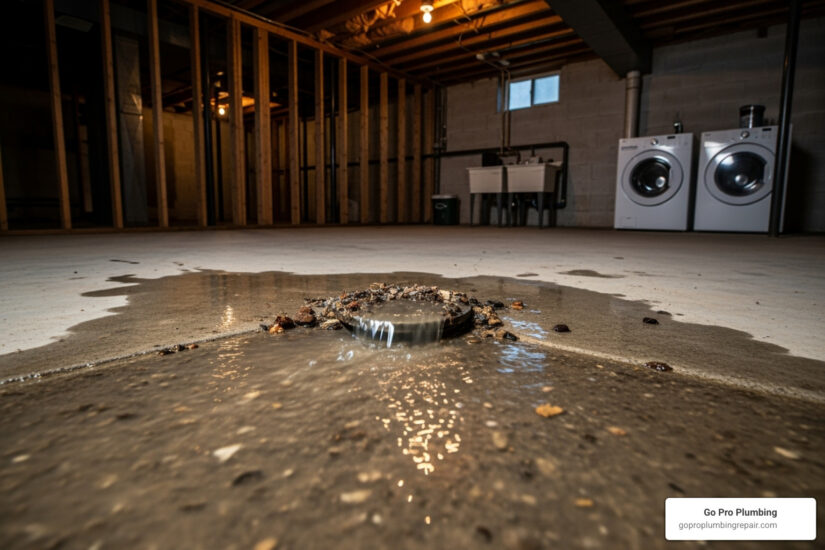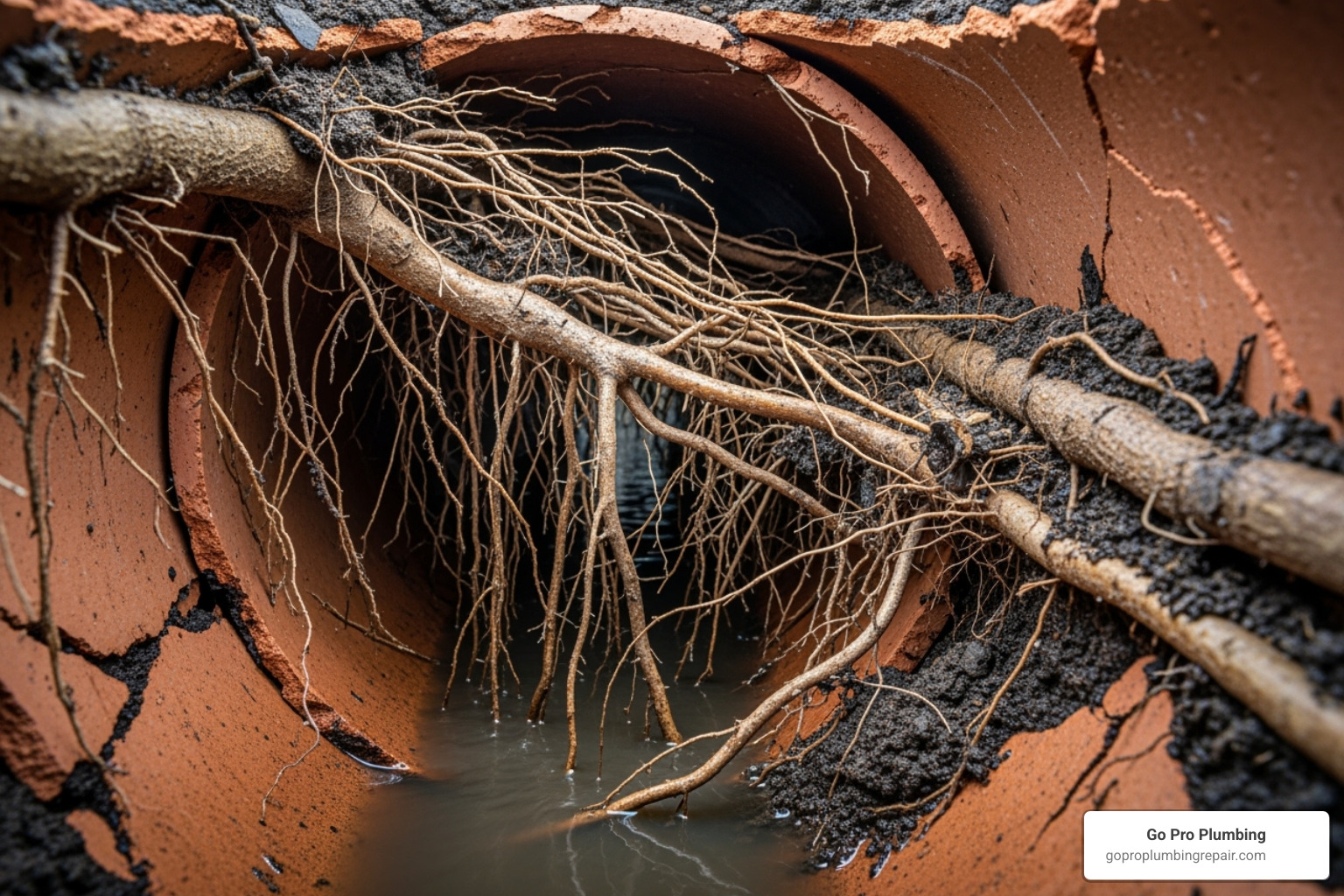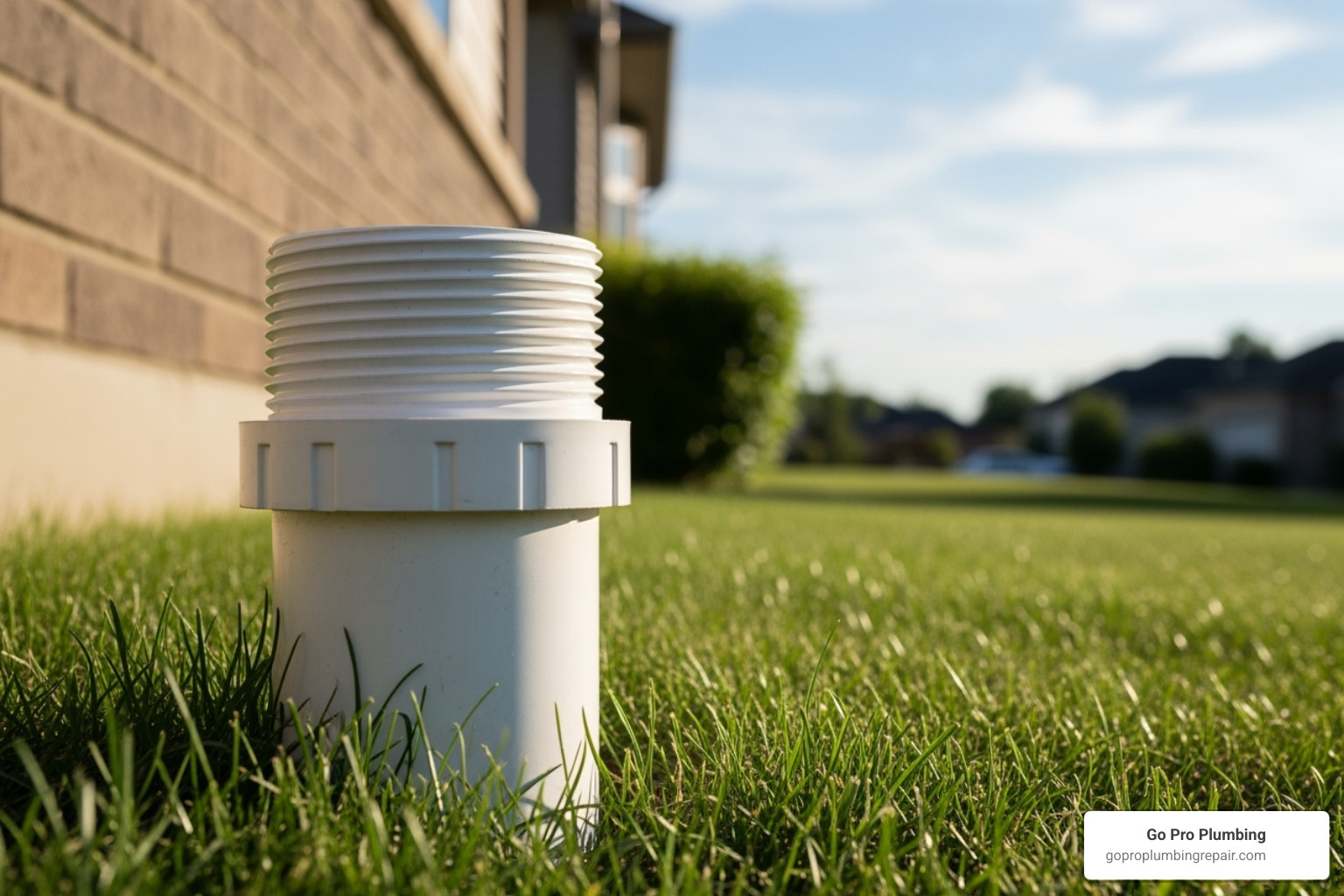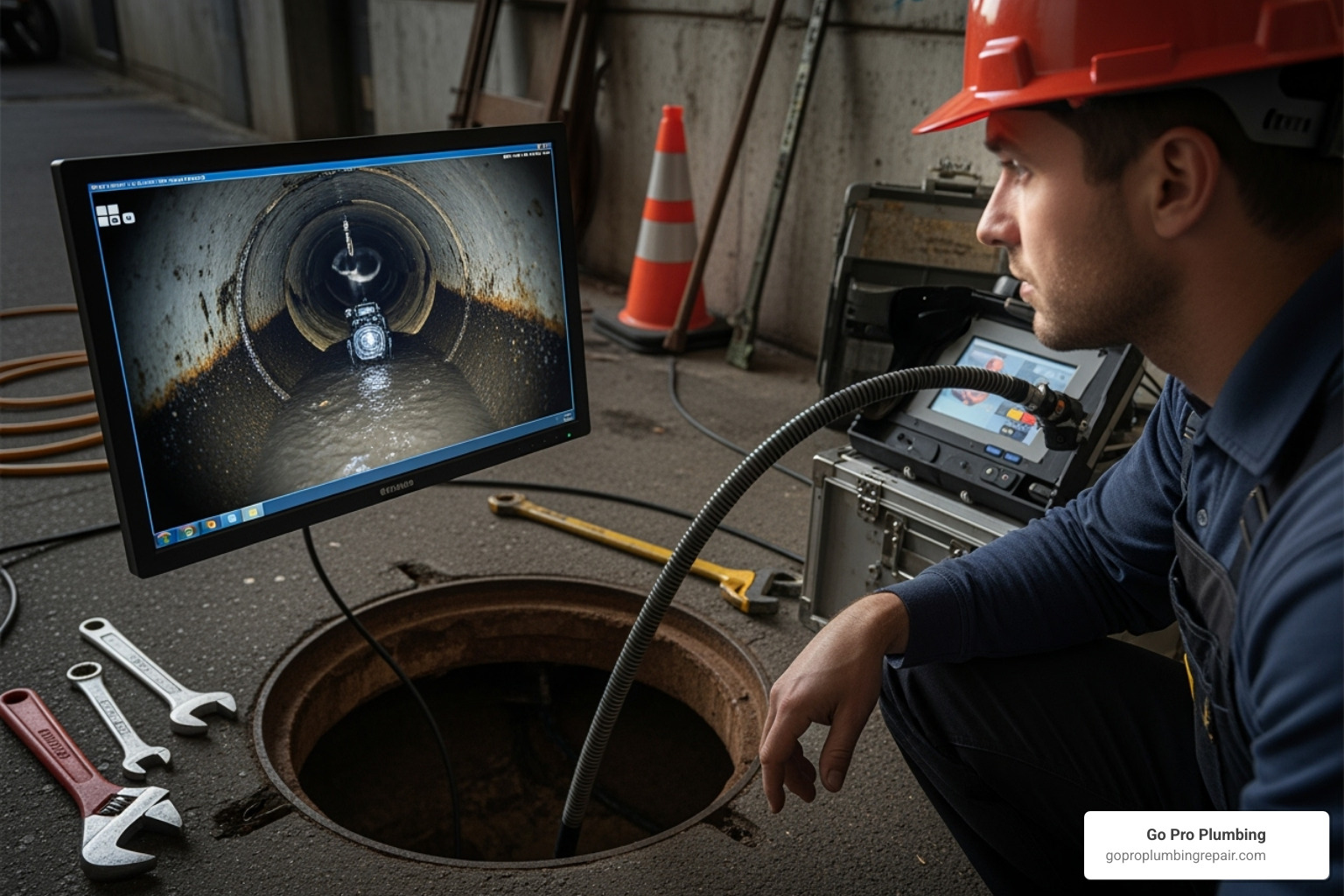Don’t Get Drained: How to Tackle a Main Line Sewage Block
By Brian on November 7, 2025

When Your Home’s Main Artery Gets Blocked
A main line sewage block occurs when your home’s primary sewer pipe—the one that carries all wastewater away from your house—becomes clogged. This is a serious plumbing emergency that can cause sewage backups, create health hazards from raw sewage exposure, and lead to significant property damage if not addressed immediately.
Quick Action Guide for a Main Line Sewage Block:
- Stop all water use – Turn off washing machines, dishwashers, and avoid flushing toilets.
- Shut off your main water supply to prevent accidental use.
- Look for warning signs – Multiple slow drains, sewage smells, water backing up in showers or floor drains.
- Do not attempt DIY fixes – Main line blockages require professional equipment.
- Call a licensed plumber immediately for camera inspection and clearing.
While a single clogged drain is a common nuisance, a main line blockage is a different beast. When multiple drains start backing up at once, or you notice sewage smells and gurgling sounds, you’re likely facing a system-wide problem. Wastewater has nowhere to go and will back up through the lowest drains in your home, such as toilets, showers, or basement floor drains.
Raw sewage contains harmful bacteria and viruses, posing real health risks. A backup can also cause thousands of dollars in damage to your floors, walls, and belongings. This guide will help you diagnose the problem, understand its causes, and know what steps to take to protect your home and family.

Is It a Simple Clog or a Main Line Blockage?
When a single sink or toilet clogs, it’s usually a localized issue. But what if multiple drains are slow, you hear gurgling from the shower when you flush the toilet, and there’s a foul odor? These are classic signs of a main line sewage block.
Understanding the difference is key. Your home’s plumbing system is like a tree: smaller drain lines from individual fixtures (the branches) all connect to one large main sewer line (the trunk). A clog in a branch only affects one fixture. A clog in the trunk affects the entire house, causing wastewater to back up through the lowest points. Knowing which one you’re facing determines whether it’s a DIY fix or a job for a professional.
Drain Line vs. Main Sewer Line: Understanding Your Home’s Plumbing
Knowing the difference between your home’s two types of drain pipes will help you identify the problem.
Secondary drain lines are the smaller pipes (1.5 to 2 inches) connected to individual fixtures like sinks and toilets. A clog here is a local problem, affecting only that one fixture.
The main sewer line is the large pipe (3 to 4 inches) that collects wastewater from all secondary lines and carries it away from your home. A main line sewage block is a system-wide problem, as it compromises the single exit route for all your home’s wastewater.
Here’s a quick comparison:
| Symptom | Drain Line Clog | Main Line Clog |
|---|---|---|
| Affected Fixtures | One single drain (e.g., kitchen sink, one toilet) | Multiple drains throughout the house (toilets, showers, sinks) |
| Water Backups | Water backs up only in the affected fixture | Water backs up in multiple fixtures, especially low-lying ones |
| Gurgling Sounds | May hear gurgling in the affected drain | Gurgling sounds from multiple drains, often when another is used |
| Foul Odors | Localized to the affected drain | Strong sewer smell throughout the house, especially from drains |
| Toilet Behavior | Slow to drain or won’t flush | Water rises, gurgles, or overflows when other fixtures are used |
| Washing Machine/Dishwasher | No direct impact on other fixtures | Discharge can cause toilets to gurgle or overflow, or tubs to fill |
If you’re dealing with a single stubborn drain, our guide on unclogging drains can help you tackle it.
Telltale Warning Signs of a Main Sewer Line Clog
Recognizing the signs of a main sewer line clog early can prevent a sewage disaster. Be on the lookout for these red flags:
- Multiple Slow Drains: One slow drain is an annoyance; several at once (sinks, showers, tubs) point to a larger issue in the main line.
- Water Backups in Low Points: If water backs up in your shower or floor drain when you flush a toilet or run the washing machine, it’s a classic sign. Wastewater has nowhere to go and emerges at the lowest point.
- Strange Noises and Smells: Gurgling sounds from drains and toilets are caused by trapped air being forced around a blockage. A persistent sewage smell from multiple drains is another clear indicator that waste isn’t flowing away properly.
- Unusual Fixture Reactions: Does your toilet bubble when the sink is running? Does the washing machine cause the tub to fill with water? This “cross-talk” between fixtures happens only when the main line is obstructed.
These warning signs indicate a serious main line plumbing clog that will only worsen. If you notice these symptoms, stop using water and call a professional immediately.
The Culprits: Common Causes of a Main Line Sewage Block
Understanding what causes a main line sewage block can help you prevent future problems. The cause is often a combination of factors, from tree roots to daily habits. For a comprehensive overview, explore our page on Sewer Line Blockage.
Tree Root Intrusion: The Silent Pipe Wrecker

Tree roots are a primary and destructive cause of a main line sewage block, especially in homes with older pipes.
Roots are naturally drawn to the moisture and nutrients in sewer lines, and they can infiltrate pipes through tiny cracks or loose joints. Once inside, they grow into a dense mass that catches waste and blocks flow. Older materials like clay and cast iron are particularly vulnerable. Over time, these roots don’t just clog the pipe; they can exert enough pressure to crack, crush, or collapse it entirely, leading to a much more severe problem than a simple blockage.
Household Habits: Grease, Wipes, and Foreign Objects
Many blockages start with what goes down the drain. Your plumbing is only designed for human waste and toilet paper. Other items can cause serious clogs.
- Fats, Oils, and Grease (FOGs): Poured down the sink as a liquid, FOGs solidify in pipes, creating a sticky buildup that traps other debris and narrows the line.
- “Flushable” Wipes: Despite the name, these wipes do not break down like toilet paper. They clump together and create massive, stubborn blockages.
- Foreign Objects: Items like paper towels, feminine hygiene products, cotton swabs, dental floss, and even food waste like coffee grounds and eggshells don’t dissolve and will accumulate in your pipes, leading to a main line sewage block.
Aging and Damaged Pipes
Over time, sewer lines can degrade, leading to blockages. Common issues with aging pipes include:
- Sagging Pipes (“Bellies”): Sections of the pipe can sink due to shifting soil, creating a low spot where waste and debris collect.
- Cracks and Breaks: Ground movement, corrosion, or age can cause pipes to crack or break. The rough edges snag debris, leading to clogs.
- Corrosion: Older cast iron pipes can corrode from the inside out, creating a rough surface that catches waste and restricts flow.
- Collapsed Lines: In severe cases, a section of the pipe can collapse entirely, creating a total blockage that requires excavation and replacement.
Your Immediate Action Plan: What to Do When You Suspect a Blockage
Facing a main line sewage block is a plumbing emergency that requires immediate action to prevent a manageable problem from becoming a disaster. For urgent help in Sacramento and Rancho Cordova, we offer 24 Hour Sewer and Drain Sacramento CA services.
Step 1: Stop All Water Use Immediately
This is the most critical first step. Any water you use will back up into your home if the main line is blocked.
- Stop all water use: Do not flush toilets, run sinks, or take showers.
- Turn off appliances: Immediately stop washing machines and dishwashers, as they discharge large volumes of water.
- Shut off the main water supply: To prevent accidental water use, turn off your home’s main water valve. This is typically located in a basement, crawlspace, or near an outdoor spigot. Knowing its location before an emergency is crucial.
Step 2: Assess the Situation and Health Risks
With the water off, assess the situation safely. Raw sewage is a serious health hazard, containing harmful bacteria, viruses, and parasites that can cause illness, as confirmed by scientific research. Avoid contact with backed-up water and keep a safe distance.
Sewage can also cause extensive property damage to floors, walls, and furniture, with mold growth beginning in as little as 24 hours. For significant backups, professional Sewer Backup Cleaning Services Near Me are necessary to safely clean and sanitize the area.
Step 3: Locate Your Sewer Cleanout

While waiting for your plumber, locate your sewer cleanout. This is a capped pipe (usually 3-4 inches in diameter) that provides direct access to the main sewer line for cleaning tools. Look for it in your basement, crawlspace, or outside near your home’s foundation.
Knowing its location will save the plumber time. Warning: Do not attempt to open the cleanout yourself. Pressure from a blockage can cause raw sewage to erupt, creating a hazardous mess. This is a job for a professional with the proper safety gear.
Professional Diagnosis and Solutions for a Main Line Sewage Block
Main line blockages require professional expertise and specialized equipment. Attempting a DIY fix can worsen the damage and expose you to hazardous contaminants. Calling a Professional Sewer Line Cleaner is essential for a safe and effective solution.
How Professionals Diagnose a main line sewage block

A professional won’t guess what’s wrong. The first step is an accurate diagnosis, typically using a video camera inspection.
We insert a high-resolution camera into your sewer line to get a live video feed from inside your pipes. This allows us to:
- Pinpoint the exact location and cause of the blockage, whether it’s roots, grease, or a collapsed pipe.
- Assess the overall condition of the sewer line, identifying cracks, corrosion, or sagging sections that could cause future problems.
This crucial step ensures we apply the right solution, addressing the root cause of the main line sewage block instead of just temporarily clearing the symptom.
Clearing the Blockage: Snaking vs. Hydro Jetting
Once diagnosed, we use professional tools to clear the main line sewage block.
- Mechanical Augers (Snaking): A professional-grade snake uses a motorized, rotating cable with a cutting head to break through tough obstructions like tree roots and solid waste.
- Hydro-Jetting: This method uses high-pressure water jets (up to 4,000 PSI) to scour the inside of the pipe. It’s highly effective at removing grease, scale, and other buildup, essentially cleaning the pipe back to its original diameter. Hydro-jetting not only clears the clog but also helps prevent future ones. Learn more from Sewer Flushing Companies.
We’ll recommend the best method based on the type and severity of the blockage.
Understanding the Costs and Repair Options
The cost to fix a main line sewage block varies. Clearing a main line typically starts around $500, but the final price depends on the blockage’s severity, cause, and accessibility. A simple clog is less expensive to clear than one caused by extensive tree roots or a collapsed pipe.
If the camera inspection reveals structural damage like cracks or a collapse, a simple cleaning won’t be enough. In these cases, we may recommend repair or replacement. Modern trenchless repair methods like pipe lining or pipe bursting can fix the line without extensive digging, saving your landscaping and often reducing overall restoration costs. You can learn more at our Sewer Line Replacement Service page.
At Go Pro Plumbing, we provide transparent pricing and explain all your options so you can make an informed decision.
Frequently Asked Questions about Main Line Blocks
Here are answers to the most common questions homeowners have about a main line sewage block.
Who is responsible for the sewer line – me or the city?
Responsibility is split. The homeowner is responsible for the sewer lateral, which is the pipe running from the house to the property line or city connection. Any clogs or damage in this section are your responsibility.
The city or utility is responsible for the main sewer line under the street. If your neighbors are having similar issues, the problem might be on the city’s side. This diagram on water system responsibility helps illustrate the dividing line, though specifics can vary by municipality.
Can I use chemical drain cleaners for a main line sewage block?
We strongly advise against using chemical drain cleaners for a main line sewage block. Here’s why:
- They are ineffective: Chemicals are designed for minor clogs like hair and soap scum, not for major blockages like roots or compacted wipes deep in a main line.
- They can damage pipes: The harsh chemicals can corrode pipes, especially older cast iron, potentially turning a simple clog into a costly pipe replacement.
- They are hazardous: These products are toxic, posing a risk to you, the environment, and the plumber who eventually works on the line.
Professional methods like snaking and hydro-jetting are safer and far more effective. Learn more about why in our article on the Best Drain Cleaner for Main Sewer Line.
How often should I have my main sewer line inspected?
Preventative maintenance is key to avoiding a main line sewage block.
We recommend a professional sewer line inspection every one to two years for most homes. This allows a plumber to catch early issues like root intrusion or grease buildup before they cause a backup.
Consider an annual inspection if:
- Your home is over 40 years old with original clay or cast iron pipes.
- You have large, mature trees on your property.
- You have a history of recurring sewer line problems.
Also, always get a sewer inspection before buying a new home to avoid inheriting a costly problem. Regular inspections extend the life of your pipes and provide peace of mind.
Conclusion
A main line sewage block is a serious plumbing emergency, but knowing how to react can protect your home from significant damage and health risks.
Remember the key steps:
- Identify the signs: Multiple slow drains, backups in low points, gurgling sounds, and sewage smells all point to a main line issue.
- Stop all water use: Immediately turn off all faucets and water-using appliances to prevent further backup.
- Call a professional: A main line blockage is not a DIY job. It requires specialized equipment for diagnosis and clearing.
Prevention is your best defense. Be careful what you put down your drains (no grease or wipes) and schedule regular sewer line inspections, especially for older homes or properties with large trees. This proactive approach can save you from the stress and expense of an emergency.
For expert diagnosis and same-day service for any sewer line issue in Sacramento, Rancho Cordova, and Northern California, trust the professionals at Go Pro Plumbing. We are committed to providing peace of mind with outstanding customer service.
Don’t let a main line sewage block disrupt your life. Schedule your sewer line service today and let our team restore your plumbing.
